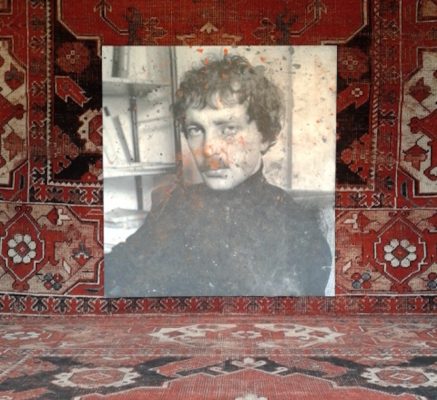Search
To search for an exact match, type the word or phrase you want in quotation marks.
A*DESK has been offering since 2002 contents about criticism and contemporary art. A*DESK has become consolidated thanks to all those who have believed in the project, all those who have followed us, debating, participating and collaborating. Many people have collaborated with A*DESK, and continue to do so. Their efforts, knowledge and belief in the project are what make it grow internationally. At A*DESK we have also generated work for over one hundred professionals in culture, from small collaborations with reviews and classes, to more prolonged and intense collaborations.
At A*DESK we believe in the need for free and universal access to culture and knowledge. We want to carry on being independent, remaining open to more ideas and opinions. If you believe in A*DESK, we need your backing to be able to continue. You can now participate in the project by supporting it. You can choose how much you want to contribute to the project.
You can decide how much you want to bring to the project.

Even though the Venice Biennale was the major art event of the summer, another major surprise was just around the corner: the monographic exhibition of Rudolf Stingel. An exhibition, that for the first time ever took over the entire Palazzo Grassi, François Pinault’s imposing exhibition space in the floating city.
On arrival one is confronted with one of Stingel’s habitual media: an Oriental carpet of red, black and white tones covers the ground floor of the palazzo. The setting is reminiscent of Stingel’s proposal for Berlin’s Neue Nationalgalerie in 2010, where he similarly covered the ground floor of Mies van der Rohe’s glass temple with a black, gray and white carpet. It is not until one penetrates deeper into the space, entering the atrium in the middle of the ground floor, that one realizes that this time Stingel’s proposal is not quite like his previous ones. Visitors don’t just step on the carpet; they are enveloped by it. The tapestry covers the floor, the staircases and the walls on all three stories of the palazzo. The monumentality of this task raises questions about the intricacies and complexities of such an undertaking.
While wandering though the exhibition one cannot help but question the tapestry as an artistic medium. Historical references come to mind, tapestries being used in the Middle Ages as décor for walls, and for depicting or, better said, documenting historical events such as battles and often religious themes. Fast-forward to the twentieth century and we find Alighiero Boetti’s tapestries of his world maps.
Tapestries have been around for quite some time but it is not until recently that they have come to the foreground as an important, albeit neglected or overlooked, artistic medium. In this year’s Biennale one could see Papa Ibra Tall’s almost psychedelic tapestries and last year’s dOCUMENTA showcased a substantial number of such pieces. From Hannah Ryggen’s tapestries from the 1930s and 1940s, that acted as a strong critique against European fascist regimes, to one of Boetti’s world maps and Goshka Macuga’s commissioned tapestries that commented on the recent disasters in Afghanistan, tapestries that hide a sort of historical contemporaneity, while revealing a peculiar complexity. They point out pictorial representations while hinting at a process-based form of art, where the process of weaving is considered both handcraft and art; they act as purely decorative elements and yet can also exercise socio-political critique.
Stingel adds yet another dimension. His carpet/tapestry is both horizontal, in the tradition of the Fuβteppich (floor tapestry) and vertical, like a Wandteppich (wall tapestry) thereby acquiring an almost sculptural quality. He is interested in the architectural dimensions that tapestry contributes to the space and the continuum it creates for the visitor’s experience. The tapestry is transformed into an interactive element of the exhibition, as it creates a context as well as a background: Stingel’s abstract and monochromatic paintings being viewed against the tapestry on the first floor and his photorealistic paintings on the second. Furthermore, the artist references Freud’s theories of psychoanalysis so one can also interpret a visit to the exhibition as a penetration into the labyrinth of one’s subconscious.
The visual and spatial homogeneity of this physical maze emits a serene sensation where time has been ostracized, reinforcing the impression of being lost within one’s subconscious. At the same time the work references Venetian history and the city’s former importance as the epicentre of cultural and economic exchange between East and West. It is hard to avoid the multilayered function of this work, its “atemporal” character and yet historical connotations, as well as its relevance to contemporary artistic and curatorial practices. Stingel’s proposal and the complexity of this exhibition seem to be the perfect opportunity for us to reconsider the tapestry’s significance as an artistic medium and even perhaps lead us to question our criteria regarding what art is.

Filippos Analitis is one of those people who enjoys pursuing strange combinations, like studying mathematics and art history. He really enjoys a good exhibition and has no doubts about travelling to find one. Likewise for contemporary dance and the piano. It’s clear that his other great passion is travelling. He also really enjoys a fine wine, a sunny terrace and hanging out with friends. Specialised in modern and contemporary art, he enjoys allowing it to surprise him.
"A desk is a dangerous place from which to watch the world" (John Le Carré)